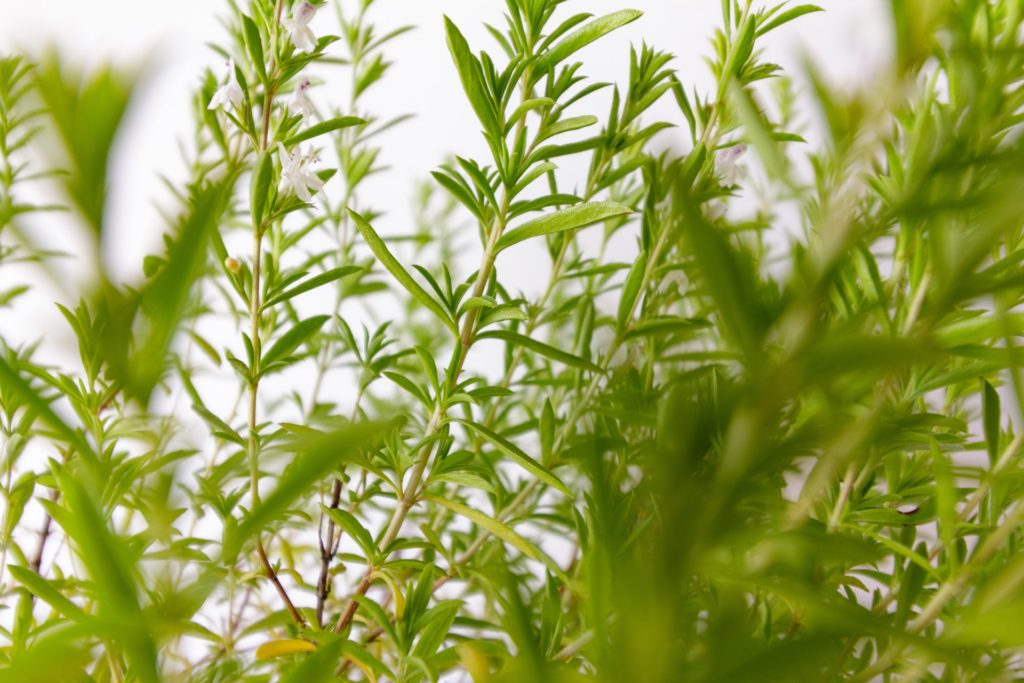
Garden-to-Glass: Container Gardens to Spice Up Your Summertime Beverage
I recently returned from a blissful long weekend boating on the Columbia River with dear friends. One is a budding container gardener, the other (wrongly!) claims to be incapable of putting together any sort of container planting. I took the opportunity to host an informal Q&A on the topic. Both wanted to know more about design and, more specifically, design recipes for their containers. Though one wanted a simple design and the other wanted advice on how to make her container plantings more interesting and unique, I noticed that both of them were unnecessarily self-critical.
CONTAINED
BRILLIANCE

The conversations got me thinking about creativity: how we approach it, how we label ourselves as creatives or not, and how sometimes it can be a real confidence booster to use another’s skill as inspiration to hone our own. My conclusion: everyone has a creative side. Like a garden, creative seeds are planted, take root and are cultivated over time. And occasionally, we just need some trellising to support its growth.
“No one has the right to dictate what others should perceive, create or produce, but all should be encouraged to reveal themselves, their perceptions and emotions, and to build confidence in the creative” Ansel Williams
With this conversation in mind, along with the fact that we sipped on delicious lavender lemon drops that weekend, it’s the perfect time to share two container herb garden designs that offer up all the necessary flavors for garden-inspired drinks. They may also serve as inspiration to fuel your creative side when it comes to container gardening.
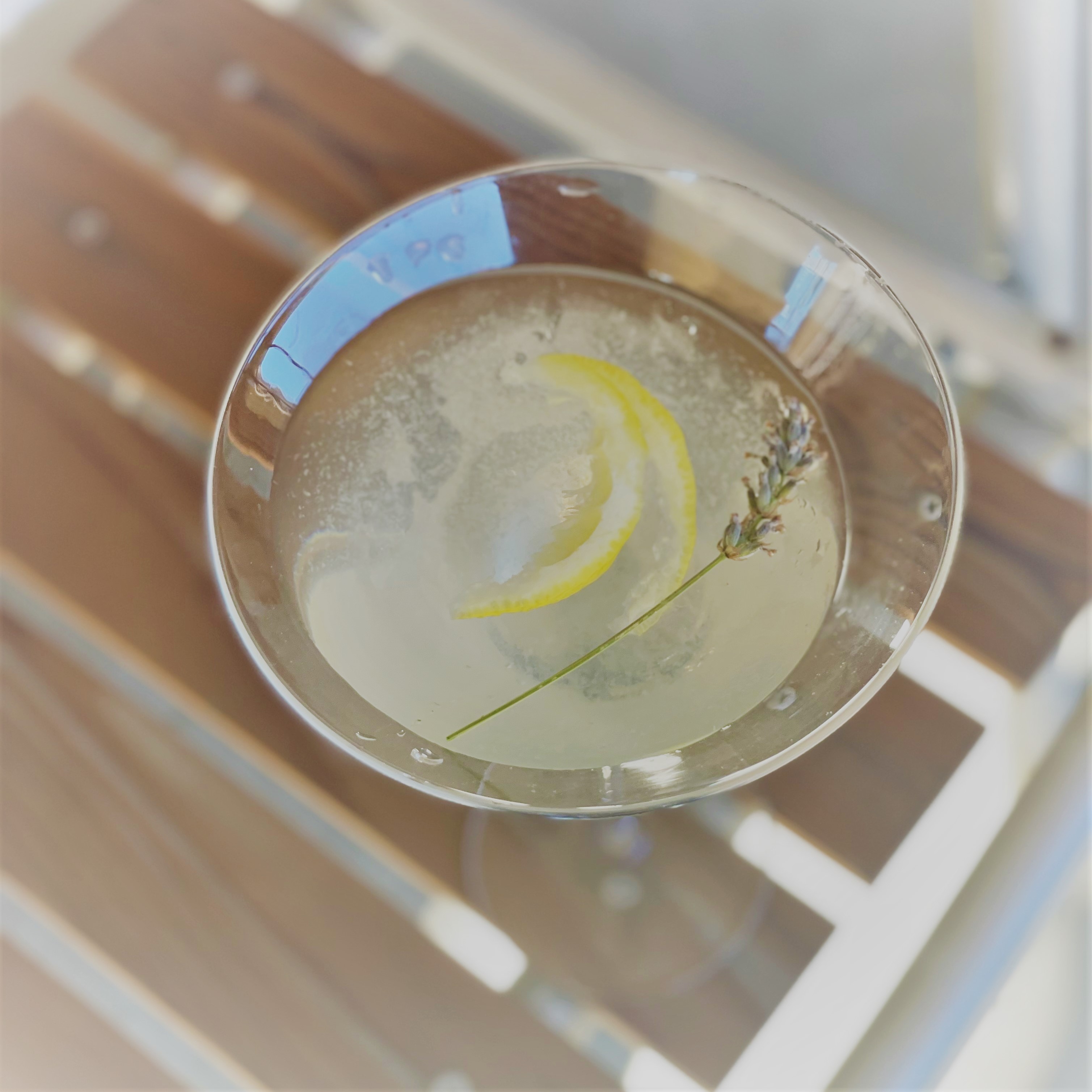
One recipe is a bit more simple, the other a touch more advanced for those wanting to try something more complex. Both designs require sunny locations and utilize the popular container garden design recipe of thriller, filler, spiller. The idea behind this combination is that the “thriller” will be the tall, attention-grabbing vertical element for the middle or back of the container, the “filler” is more rounded in shape and literally fills in the gaps, and the “spiller” will trail out over the container to soften its edges. This type of design combination is easy to adopt and serves as a simple formula for creating three-dimensional depth and visual interest.
Both container designs are also based on some of my favorite flavors for garden-to-glass cocktails, mocktails or tea mixes. You likely have your personal favorites as well, and I encourage you to use them in your container planting. Be creative, make it yours. You can grow most any herb alongside another as long as it's grown in good well-draining potting soil and the plants have similar light and watering needs.
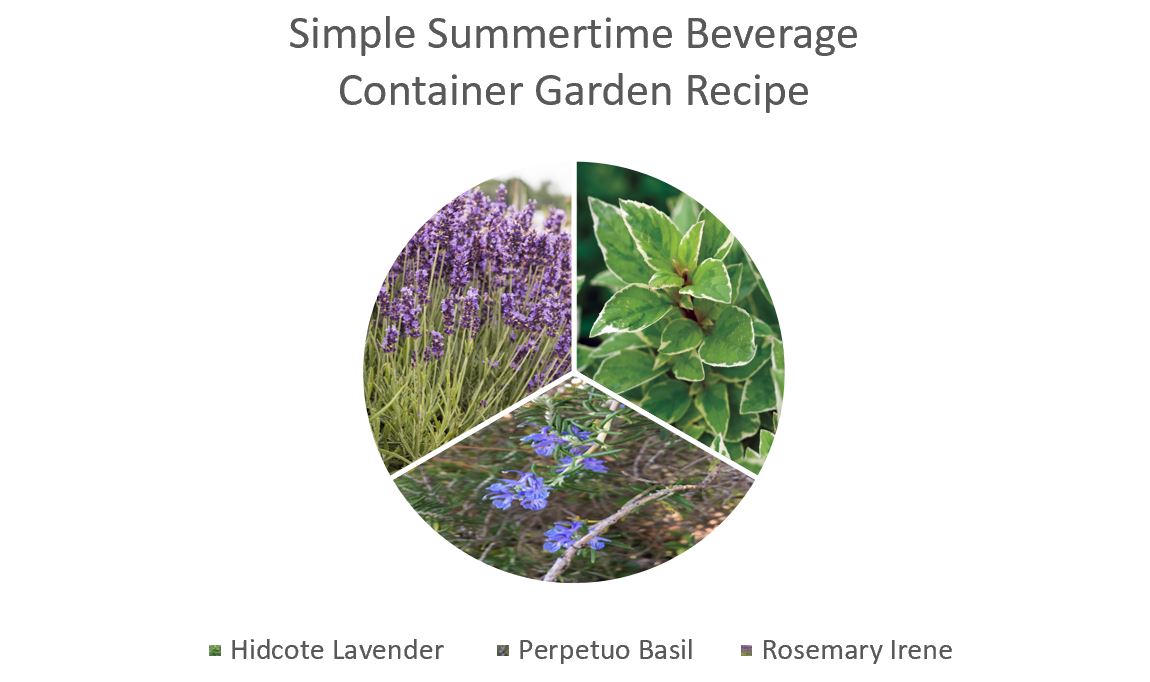
This simple planting combines three easy to grow herbs that enjoy similar care and growing conditions. Hidcote Lavender 1G, (2) Basil Pesto Perpetuo 4”, and Trailing Rosemary 4”
The Thriller: Lavandula angustifolia/Hidcote Lavender
Flavor: Lavender has a floral sweetness with herbaceous and woody undertones. Its distinctive flavor goes a long way so you can use it sparingly.
How to use it: It’s quite tasty when prepared in a simple syrup or muddled, and due to its summertime flavor it is often used in drinks featuring vodka, gin or lemonade. Its fragrant flowers also make a lovely garnish.
How to grow it: Water deeply—as it needs consistent moisture to establish a strong root system—but make sure it also has good drainage. It doesn’t like wet feet, nor does it enjoy drought. Lavender prefers at least 6 -8 hours of full sun a day. Harvest as the blossoms begin to open.
The Filler: Ocimum x citriodorum ‘Pesto Perpetuo’/Pesto Perpetuo Basil
Flavor: Basil is both sweet and savory and can add pepper, mint or licorice-like notes to a beverage. Pesto Perpetuo Basil has a distinctive citrus-y flavor to it as well.
How to use it: Basil is currently a trendy herb in the cocktail scene—an herb you can muddle, use as a garnish or use in a simple syrup with gin, tequila, rum or any run-of-the-mill cocktail as a change of pace. Currently, I am loving Honey Basil Lemonade as a non-alcoholic refreshment. Plant wise, it’s beautifully variegated with white creamy margins adding brightness and interest to any container planting.
How to grow it: Basil plants need plenty of water and sunlight. This specific basil doesn’t flower so leaves can be harvested over a longer season than most other basils. When harvesting, take leaves from the top a few at a time so the plant will have continued healthy growth throughout the summer and beyond.
The Spiller: Rosmarinus officinalis ‘Irene’/ Irene Trailing Rosemary
Flavor: Rosemary has a rich woody, lemony, pine flavor—almost balsamic in nature.
How to use it: Its rich flavor works well with sweet acidic flavors like lemon and orange. Whole or muddled it gives depth to any gin, vodka, or bourbon beverage. Like lavender, a little rosemary goes a long way and adding a sprig to any summertime drink can be a nice festive garnish.
How to grow it: Rosemary loves a hot sunny location. It’s easy to grow and is drought-tolerant once established. Harvesting this plant regularly by trimming at least halfway down the tender tips of the plant, taking care to avoid the woodier stem, keeps it looking good all year long.
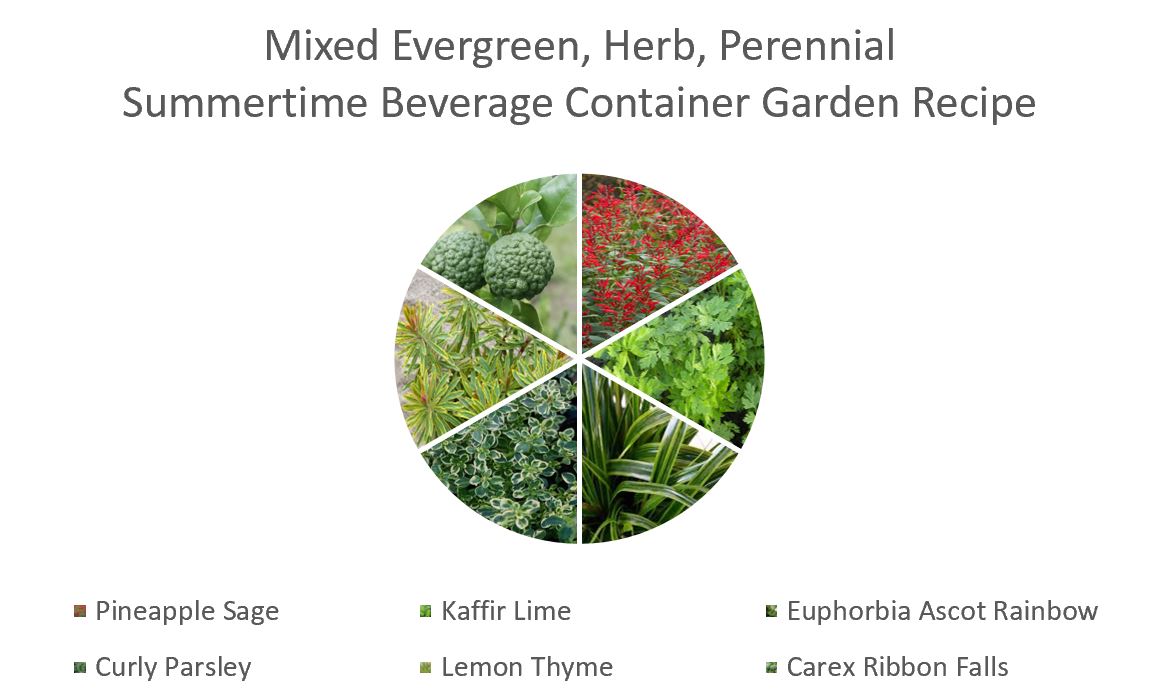
This planting is a combination of herbs, annuals, perennials and evergreens for year-round interest. Thai Lime (2G), Euphorbia ‘Ascot Rainbow’ (1QT), Carex Ribbon Falls (1QT), Curly Parsley (2- 4”), Lemon Thyme (4”) , and Pineapple Sage (QT)
The Thriller: Citrus hystrix/Thai Lime or Kaffir
Flavor: Both the fruit and leaf have a strong citrus flavor that is best described as a combination of lime, lemon and mandarin. The leaf can have a potent sour citrus flavor with floral undertones to it as well.
How to use it: The Thai lime adds a zesty, fresh taste to drinks such as spritzers and margaritas. A single leaf in a gin-and-tonic perfumes the whole glassful and covering a handful of them with gin (or vodka, or water, for that matter) gives you an intense lime infusion that makes fantastic drinks.
How to grow it: A subtropical tree, it prefers 6-8 hours of sun but will take some shade if outdoors. However, it does hate the cold and the wet so where I live in region 8b I do need to move it to a bright sunny spot indoors for the winter.
Thriller or Filler: Salvia elegans/Pineapple Sage
Flavor: The leaves smell wonderfully of pineapple, but its flavor is actually more herbal than fruity. The showy red flowers have slight mint and citrus tones.
How to use it: Pineapple Sage provides an abundance of fragrant foliage. Crush its aromatic leaves and rub around drinking glass rims for a tropical scent, or snip a section of its square stem, remove the leaves, and use it as a stirring stick or cocktail spear. Its tall, fire-engine red flowers can be cut to provide flair to any beverage or tossed into a green salad for an attractive sparkle as well.
How to grow it: Pineapple Sage enjoys full sun, regular watering, and nutrient-rich well-draining soil. It can grow to be 3’ tall and wide, so give it some room and plant it behind the smaller plants to provide them with the light they need. Hardy to 20 degrees, it is totally worth planting even if it fails to return one season due to extremely cold temps.
The Filler: Euphorbia x martinii ‘Ascot Rainbow’, Ascot Rainbow Euphorbia
Note: this filler is ornamental, not an edible. In fact, be careful when handling because the sap from the plant can be an irritant to eyes and skin.
Flowers: Chartreuse and cream bracts with deep red centers that bloom in clusters late spring through summer.
Foliage: Narrow sage green leaves with golden lime borders that turn to shades of red, pink and orange during the cooler months of fall and winter.
Habit: Perennial/Evergreen depending on climate. Grows to a height of 20 inches and has a similar spread, preferring full sun.
The Filler: Carex oshimensis ‘Ribbon Falls’/ Carex Ribbon Falls
Foliage: Its graceful deep green, arching blades give a nice cascading effect and strappy texture to container plantings.
Habit: Mounding Evergreen that grows 15” tall and equally as wide. It tolerates both sun or shade making for easy placement.
The Filler: Petroselinum crispum/Curly Parsley
Flavor: Parsley gives a subtle fresh peppery flavor reminiscent of anise.
How to use it: It’s a bit milder in flavor than the other herbs mentioned and best paired with subtly flavored clear colored spirits like gin and vodka. It’s also wonderfully refreshing in this grapefruit parsley spritz mocktail, and its lacy ruffled leaves give a unique texture to this container planting.
How to grow it: Parsley needs 6-8 hours of sun a day and nutrient-rich, well-draining soil. Pinching off seedhead stalks as soon as they appear will help retain its sweet flavor and extend the plant’s lifespan.
The Spiller: Thymus citriodorus/Lemon Thyme
Flavor: Lemon thyme has the similar minty, earthy, floral notes as thyme but a stronger citrus taste.
How to use it: It brings a freshness and a boost of citrus flavor to classic cocktails so use it in a simple syrup or garnish with a sprig.
How to grow it: Echoes the euphorbia’s color in a finer foliage for design purposes. Thyme is happiest in full sun, heat and nutrient-rich well-draining soil and can take some drought once established. Harvesting thyme is best done before the plant flowers in the early morning.
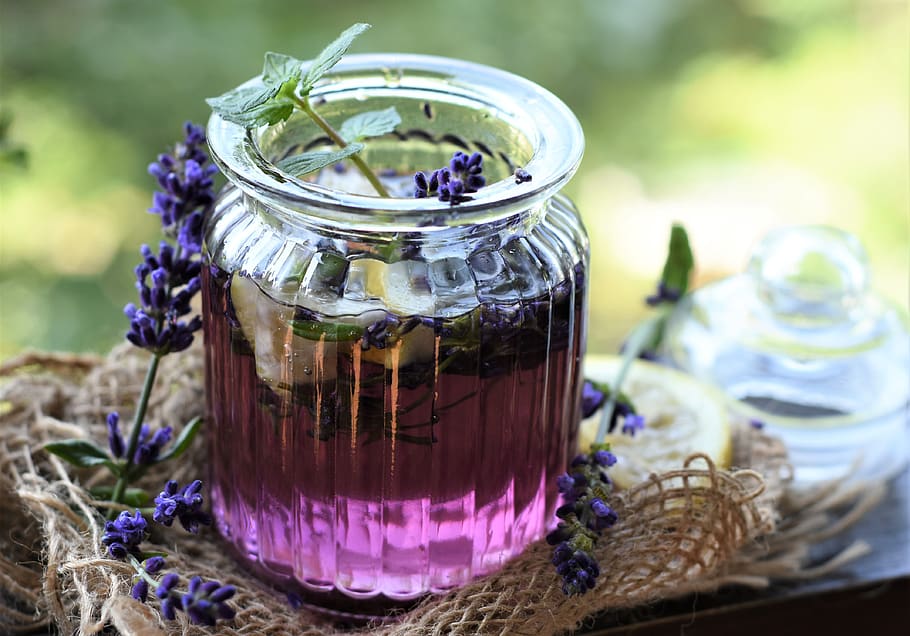
A few more tips for your garden-to-glass concoctions...
- Other popular edible herbs and flowers for summertime beverages include mint, geraniums and nasturtium.
- Choose a location for your planting that is accessible but perhaps not at your front door or another highly visible location — if you’re planning on harvesting herbs and flowers frequently, this could be aesthetically unappealing.
- Plan how large the plants will be at full size. If you’re not careful plants could shade out their shorter neighbors, causing one of these sun lovers not to thrive.
- Consider companion planting, some herbs and plants that share similar soil preferences, light and watering needs, are mutually beneficial for one another and can decrease insect and disease issues.
- Remember that harvesting in the morning provides more saturated flavor than harvesting in the afternoon.
For more “garden to glass” recipes and information on growing herbs to craft them, check out Amy Stewarts’s Drunken Botanist, Artisanal Cocktails by Scott Beattie, or The Wild Crafted Cocktail by Ellen Zachos. All are fantastic reads and worthy bookshelf adds!
Remember, anyone, no matter how experienced or creative, can plant a container garden with a little support! So, pick a few of your favorites, plant a few herbs and explore how easy and rewarding it can be to grow, harvest and concoct your own signature garden-to- glass beverage.
And, please, share your recipes and successes — I love to hear about them.

Resources:
Cocktails in the Garden, by Marty Ross
Create a Cute Cocktail Garden in a Container for Spicing Up Summer Drinks, by BH&G Editors
5 Must-Have Herbs for your Cocktail Garden by Mick Telkamp


